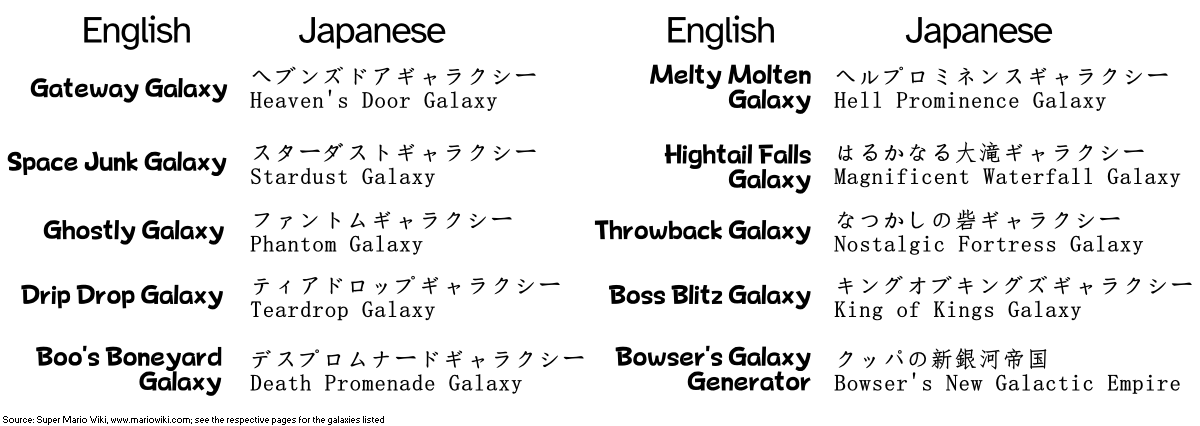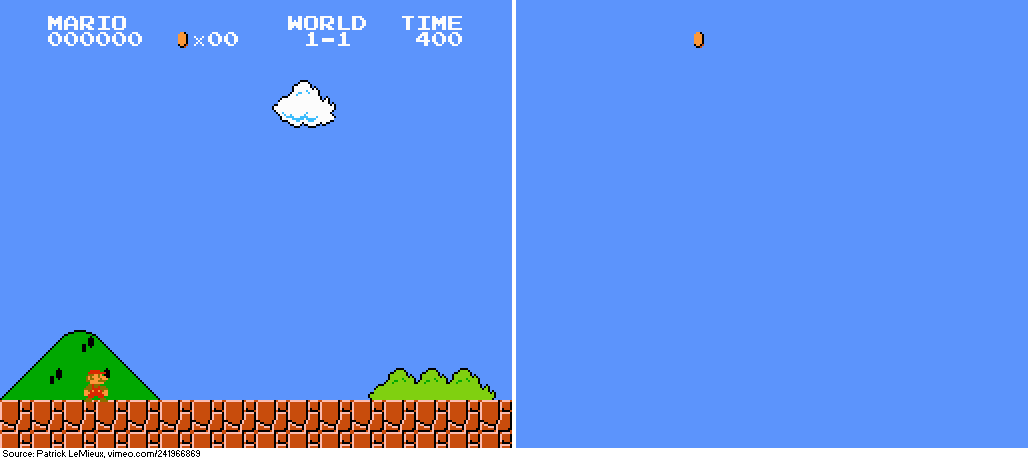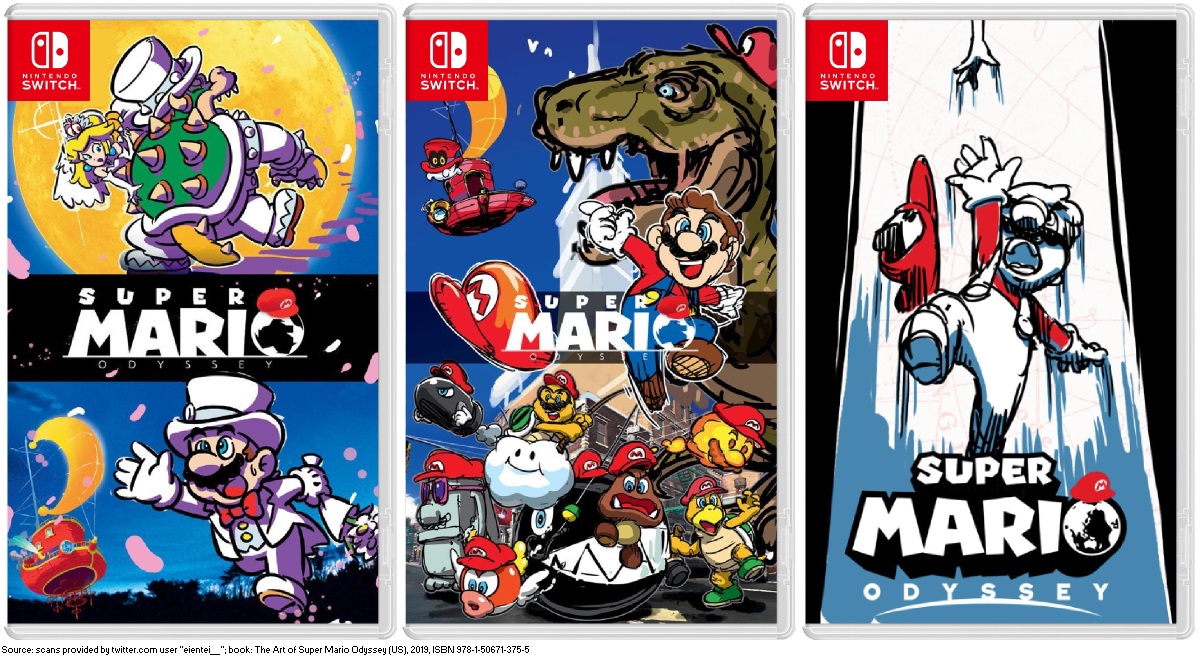1551
1552
1553
In Super Mario Galaxy, this planetoid in the third mission of Ghostly Galaxy is unique in that if Mario performs a long jump on it for long enough without landing, the game will decide that Mario has been falling for so long that a death sequence must be activated, and kill him.
1554
1555
1556
In Super Mario 64, jumping onto this ledge in the lobby of Peach's Castle may cause Mario to become trapped in a perpetual stumbling state. Since Mario cannot move and the castle pause menu does not have an option to exit the level, the game must be reset to continue playing.
1557
In Level 3-1 of Super Mario Bros. 2, there is a shortcut beyond a gap that Luigi and Peach can clear easily, but Mario and Toad can't. However, even they can access it: the decorative clouds have secret functionality where they can support Mushroom Blocks to bridge the gap.
1558
1559
1560
When creating the Skeeter enemy in Super Mario 64, the designers overlooked that the game's mechanics make a water surface-based enemy completely ineffectual. Since Mario automatically recovers health on water surfaces, all damage dealt by a Skeeter is immediately undone.
1561
1562
1563
In Super Mario Bros. 3, hitting a regular Note Block after jumping on a Red Note Block will cause Mario to endlessly switch between rooms, requiring the game to be reset. This also shows that the decorative background items are randomly generated every time the room is loaded.
1564
1565
In Super Mario 64, throwing a crate, then picking it up again before it hits a wall turns it into a "deadly crate" that has the ability to hurt enemies simply by being touched. The footage below shows some enemy interactions with the deadly crate.
1566
1567
1568
1569
In Super Mario World, Yoshi can begin eating a Berry during Mario's death animation. However, the game is unable to handle both Yoshi's eating animation and the death animation at the same time, so it simply freezes instead.
1570
1571
In Super Mario Bros. 3, entering quicksand with a flying power-up and flying back out will cause Mario to not assume his flying sprite as long as he is moving upwards. Depending on whether he flies straight up or to the side, he will appear to stand or walk in mid-air.
1572
1573
The AI of the Wiggler boss in Super Mario 64 is extremely rudimentary. It turns in a large circle, but if Mario stops inside that circle, the Wiggler will perpetually continue making the same turn without correcting itself even though it will never hit Mario.
1574
1575















